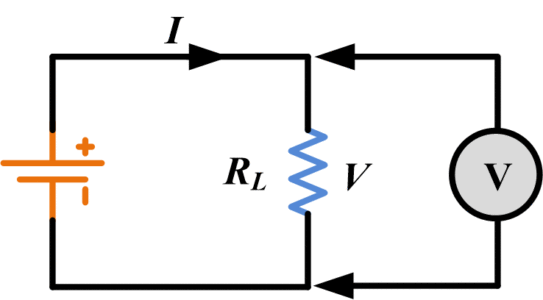10th Grade > Physics
ELECTRICITY MCQs
:
D
Effective Resistance(Re) when 2 resistors, let (R1andR2)are in parallel is given by (Re)= R1×R2R1+R2
Given :
R1=100Ω
R2=0Ω
(Re)=100×0100+0=0
:
B
We know heat produced in a conductor is H=I2Rt, where 'I' is the current flowing, 'R' is the resistance of wire and 't' is the time for which current is flowing in a conductor.
When electrical resistance 'R' and time period 't' is kept constant then, H∝I2.
So, if the current is doubled, the heating effect of a current through a conductor becomes 4 times of the original.
:
B
Two in series = 8 Ohm
This 8 Ohm will be parallel to 4 Ohm which gives a resultant =(4×84+8)=(83)Ohm.
:
D
When resistors are connected in parallel, the equivalent resistance is less than the lowest resistance in the circuit.
Proof is as follows:
As we know when R1, R2, R3 ... Rn resistors are connected in parallel circuit, the equivalent resistance of the circuit is
1Req=1R1+1R2...1Rn
1Req≥1Ri∀ i∈{1,2,3,....,n}
⟹Req≤Ri
:
B
Two in series = 8 Ohm
This 8 Ohm will be parallel to 4 Ohm which gives a resultant = (4×84+8)=(83) Ohm.
:
B
We know heat produced in a conductor is H=I2Rt, where 'I' is the current flowing, 'R' is the resistance of wire and 't' is the time for which current is flowing in a conductor.
When electrical resistance 'R' and time period 't' is kept constant then, H∝I2.
So, if the current is doubled, the heating effect of a current through a conductor becomes 4 times of the original.
:
D
Power consumed by the electric bulb, P=V2R, where V is the potential difference and R is the electrical resistance.
Given for 1st case:
Voltage V1=220 V
and power consumed by bulb P1=100 W,
In the 2nd case:
Voltage of the bulb, V2=110 V
Power consumed by the bulb = P2
Since the resistance is the same as it is the same bulb
P1P2=(V1)2(V2)2
100P2=(220)2(110)2
P2=100×(110)2(220)2=25W
Power consumed when the bulb is operated at 110V = 25W
:
D
Effective Resistance (Re) when 2 resistors, let (R1 and R2 )are in parallel is given by (Re) = R1×R2R1+R2
Given :
R1=100Ω
R2=0Ω
(Re)=100×0100+0=0
:
A
Electric current is defined as the amount of charge flowing through a cross-section area per unit time. It's direction is conventionally taken opposite to the direction of flow of electrons.

















